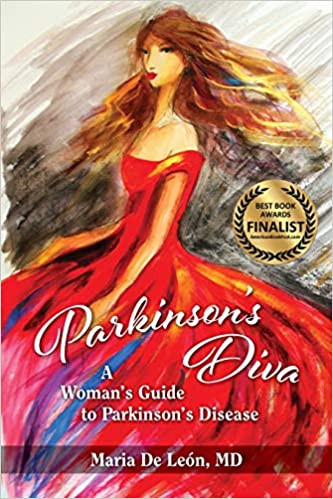
Q&A with Maria De León, MD
What are some of the key differences in how Parkinson’s expresses itself between men and women?
It is naive to think that a complex progressive neurodegenerative disease such as Parkinson’s disease would not have different impact on individuals of varying ages and gender from a socioeconomic standpoint. However, aside from the fact that each individual’s social status in life (i.e., married vs. single, retired vs. employed, with children or not) plays an active role in how the disease impacts a person’s life the actual biology of gender may have a more crucial role in presentation and progression.
There is mounting evidence that key differences in presentation, progression of disease and even response to medications, depend on gender and hormonal status. We know that women have more depression and pain vs. men may have more behavioral issues including psychosis. Because we are not clear on the exact nature hormone status plays on disease, we are in process of investigating this via genetic studies coupled with survey delineating hormonal status – would it be similar to findings regarding dementia/ Alzheimer’s, heart disease and stroke where women are protected during childbearing years. However as women enter menopause the neuroprotective effect appears to wane such that their risk for contracting these diseases equals or even surpasses that of that of men. Women appear also to have more side effects with medication such as dyskinesias, perhaps because doses based on studies done primarily on men but also perhaps because men have less fat and higher metabolism. Hormones also play a role not just on amount of fat but distribution in the body.
What do we know about the effects on the fetus of mothers with PD?
As far as we know from the limited available data reproduction and fetus status / development is not impacted by disease, however this is not to say that the medications used to treat PD may not have a harmful impact. We do have some insight that pregnancy may trigger onset of disease. Certainly being pregnant may worsen disease because of hormone status but also decreases a capacity to take medications even after delivery since many pass through milk while breastfeeding.
How does gender bias in medicine impact the effective treatment of women with PD?
There is still unfortunately an inherent bias that occurs in diagnosing women, particularly those of ethnic background – perhaps because in countries where women are treated as second-class citizens or male dominating women have developed traits characteristics to demand attention commonly regarded in medicine especially among older physicians as histrionic or hysterical. Now compound this with fact that until recently doctors were mostly male and way of disseminating information in medicine is based on “seeing one and teaching one“ and when we have a disease that for centuries has been deemed to be mostly affecting older men, seeing a young woman with a possible diagnosis of PD can be easily overlooked if one does not keep an open mind resulting on a delayed diagnosis on average of 2-3 years.
How does PD reveal the hidden artistic talents of some patients?
Creativity has been an issue often talked about in those with Parkinson’s disease but considering that many famous artists many of whom had severe neurological disease implies that creativity maybe a result of the remapping, restructuring of our brains as it tries to cope with those parts injured or involved – we also know that particular areas of the brain when stimulated exteriorly with electrodes or after being stricken by lightening can improve creativity.
Could you elaborate on the idea that the side effects of the medication used to treat Parkinson’s can sometimes be worse than the disease?
Many have said that sometimes the treatment is worse than the cure for what ails us. All medications whether natural or synthetic because foreign to our bodies have potential to cause a harmful reaction. The goal of treatment is to find the maximum positive effect with the minimal disruption to our organism ie least side effects – we must look at the risk benefit ratio – the goal is to improve or maintain quality of life.
What advice do you have for a caretaker so that he/she does not get overwhelmed or lose him/herself in caring for another?
The best advice I can give to those in caregiver role is to think of it as a marathon rather than a sprint / to continue to make plans and have goals with the patient as well as individual dreams and goals. Allow the patients to be independent and active, and lend a hand only if needed, because there will be a time when the role will requiere 24 hour 7 day a week care. You don’t want to be burned out by the time this happens or worse no longer involved with loved ones care. You’ve got to pace yourself prioritize things ask for help and take time for yourself as well – discuss with patient long term-goals and wishes.

